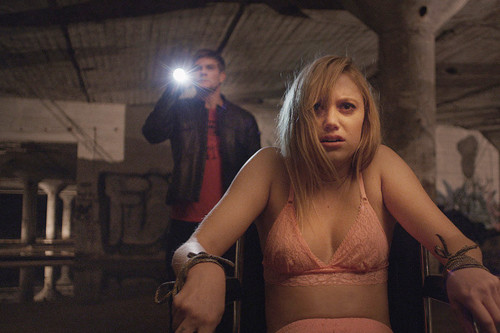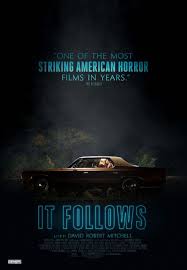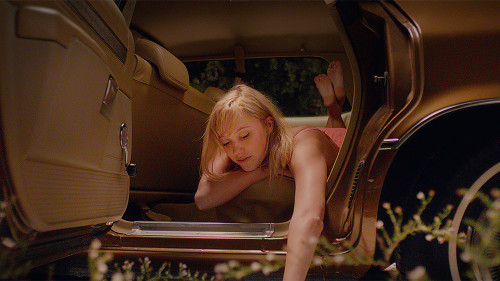This guest post by BJ Colangelo appears as part of our theme week on Dystopias.
When I was 8 years old, I was given written permission from my parents to watch Titanic on VHS at my friend’s 10th birthday party. Loaded up on birthday cake, potato chips, and as much cherry Coke as I could stomach, I sat in awe as I watched the seemingly unsinkable ship crack in half and kill approximately 1,500 people. As the string quartet played their final notes, the main antagonist of the film (Billy Zane’s Cal Hockley) grabbed a stray child claiming her to be his daughter in order to secure himself a space on a lifeboat reserved for women and children. My friend’s mother was a feminist, liberal arts school college professor and upon watching this scene uttered:
“Leave it to a man to manipulate the only system put in place where a woman’s life is actually given any sort of value.”
Every day, women are made to feel worthless. Whether it’s the media bombarding us with contradictory ideas on how to be, or the fact politicians still think our rights need to be settled by a vote, women are still struggling for equal treatment in just about every aspect of existence. During the March 10 edition of Fox News’ The O’Reilly Factor, Bill O’Reilly hosted Marc Rudov, author of Under the Clitoral Hood: How to Crank Her Engine Without Cash, Booze, or Jumper Cables, to discuss “What is the downside of having a woman become the president of the United States?” Rudov’s initial response to the question was, “You mean besides the PMS and the mood swings, right?” I can’t keep count of the number of times the fact that women menstruate has been used as a reason to render us incapable of doing something. However, the fact women can have children (while cis-men cannot) is arguably our greatest power in a time of crisis.
As seen in Danny Boyle’s 28 Days Later… Christopher Eccelston plays the leader of what appears to be the last of surviving civilians in Britain after the epidemic of the Rage Virus. Eccelston’s Major Henry West is a military man through and through, as are the overwhelming majority of the men surviving at his outpost. Major West sent out a radio broadcast searching for survivors to join him and his men, but once characters Hannah, Selena, and Jim arrive at the sanctuary, the true motivations for the radio broadcast become horrifyingly clear:
“Eight days ago, I found Jones with his gun in his mouth. He said he was going to kill himself because there was no future. What could I say to him? We fight off the infected or we wait until they starve to death… and then what? What do nine men do except wait to die themselves? I moved us from the blockade, and I set the radio broadcasting, and I promised them women. Because women mean a future.”
While Major West’s speech (and the events that shortly follow) opens up an entirely new can of worms regarding the sexual politics of the apocalypse, it’s still a reminder that women are arguably the most important symbols of hope in dystopian landscapes.
We often think of dystopian films set in fantastical and futuristic worlds after some post-apocalyptic cause. What we see in It Follows is the wastelands of Detroit and the aftermath of economic devastation. It’s this backdrop set in a contemporary setting that blurs our vision of the forest for the trees. The value of women in this dystopian world is quantified by the supernatural curse that starts to follow these characters. This outside force makes it so that a sexual encounter is needed in order to survive. It’s blatantly said through the film that it’s easy for Jay (Maika Monroe) to pass it on, “because she’s a girl.” She even has two suitors fight over the opportunity to take on this curse, allowing her to be in the power position to have a choice in which suitor essentially lives or dies. It’s from the male perspective that women are seen as currency, as something holding the most value, and they will do anything to obtain them.
Mad Max: Fury Road enforces this practice through the lens of women fully aware of their value. The plot of the film is centrally focused on gender politics, but it never once feels heavy handed. Surprisingly, the escaped “wives” in the center are also never sexualized, even from their former captor. The girls do discuss the villain Immortan Joe having a “favorite,” but the women are fully aware of their value. Amidst gunfire, these women use themselves as shields, understanding the War Boys’ fear of harming them. However, this fear isn’t rooted in a sexual desire, but in the desire to survive. Sexuality isn’t used as a weapon, but the women use themselves as a weapon to address the fact they are in control of any hope for the future. Immortan Joe’s desire to save the women comes not from a loss of beautiful sex slaves, but from a loss of the possibility of continuing his familial line. Men cannot continue on their own without women, and the world of Fury Road knows it. In this universe, we must work together to make a future.
The unfortunate reality of the value of women in dystopian societies is that the relegation of women as currency brings out the absolute worst in humanity. They say that money is the root of all evil, and if women are now being valued as a currency, the evil is bound to leak through. In 28 Days Later… the soldiers are willing to rape the first women they see, and in It Follows, a man has chloroform at his disposal, presumably for use in case Jay were to have denied him sex. While there is power in women gaining the ultimate value in dystopian landscapes, there is also a great risk that comes along to being reverted to nothing more than currency.
BJ Colangelo is the woman behind the keyboard for Day of the Woman: A blog for the feminine side of fear and a contributing writer for Icons of Fright. She’s been published in books, magazines, numerous online publications, all while frantically applying for day jobs. She’s a recovering former child beauty queen and a die-hard horror fanatic. You can follow her on Twitter at @BJColangelo.


















